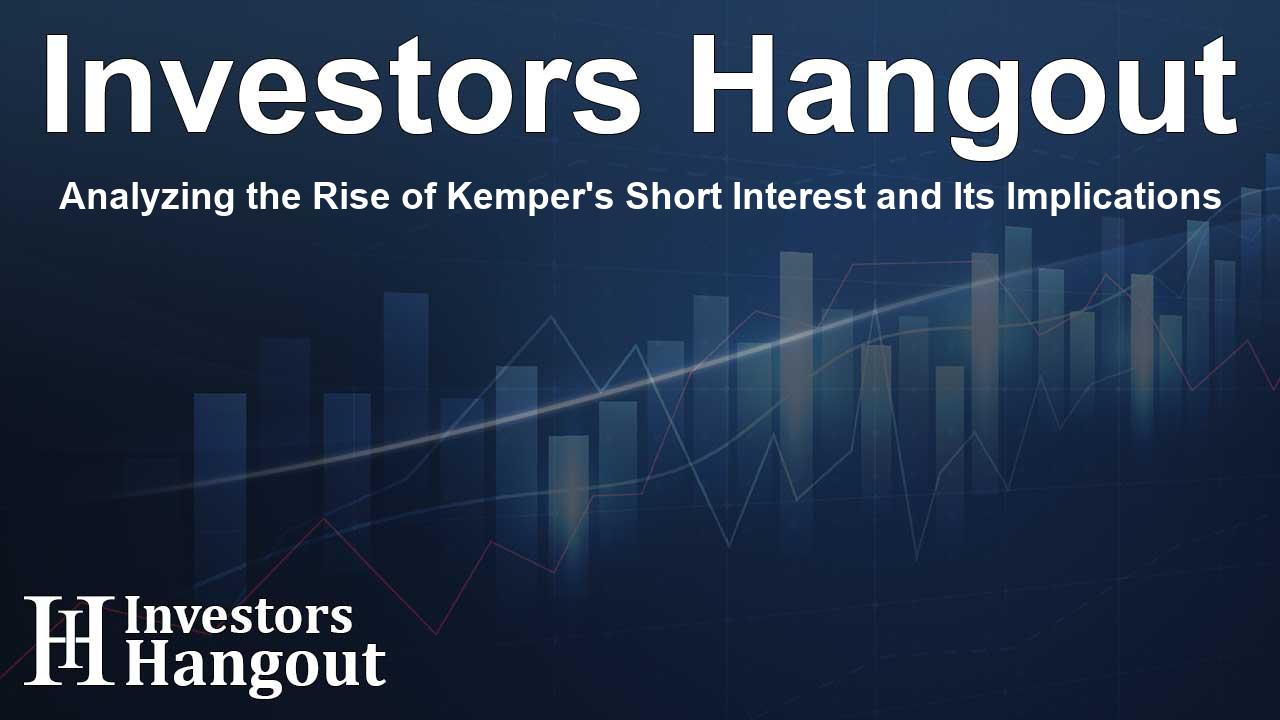Analyzing the Rise of Kemper's Short Interest and Its Implications

The Surge in Kemper's Short Interest
Kemper's short interest has noticeably increased by 63.97% since the last reporting period, with a total of 3.66 million shares sold short. This figure represents approximately 5.87% of the total shares available for trading. On average, it would now take traders around 2.44 days to cover their short positions, indicating a heightened activity in the stock.
Understanding Short Interest
Short interest refers to the volume of shares that have been sold short but are yet to be covered or bought back. This mechanism is significant in trading as it reflects the sentiment of traders regarding a company's stock. Essentially, short selling allows traders to sell shares they do not possess, banking on the hope that the stock price will decline. If the price falls, profit can be realized; conversely, if the price rises, they will incur losses.
The Importance of Tracking Short Interest
Monitoring short interest is crucial as it serves as an indicator of market sentiment towards a specific stock. When investors exhibit an increase in short interest, it is often a sign of a bearish outlook, reflecting pessimism about the stock's future performance. Conversely, a decrease could suggest a more bullish market sentiment, with investors showing confidence in upward price movements.
Kemper's Short Interest in Context
The latest figures show an escalating trend in Kemper's short interest compared to its peers, with a benchmark short interest average among similar companies being 5.55%. This places Kemper's short interest above many of its competitors, raising questions about investor confidence in the company’s future performance.
Interpreting the Short Interest Trends
The recent rise in short interest for Kemper could imply skepticism among investors about the company's prospects. Nonetheless, it’s essential to consider that an increase in short positions can sometimes indicate that investors anticipate a rebound, making the scenario more complex. For example, during market volatility, increased shorting can serve as a hedge against potential losses.
Benchmarking Against Industry Peers
When comparing Kemper's short position to that of its industry peers, it's apparent that a higher short interest could point to more significant challenges or concerns that investors may have about its market strategies or financial health. Analyzing competitive companies can provide deeper context about market expectations and investor behavior. This peer analysis becomes an instrumental tool for investors looking to gauge how Kemper stands in the broader industry landscape.
Looking Ahead: What This Means for Investors
Understanding the state of short interest is pertinent for current and prospective investors in Kemper. Monitoring trends can result in informed decision-making as the stock's future unfolds. Observing stock price movements and the reactions of short-sellers will be key components of making strategic investment choices.
Investment Strategies in Light of Short Interest
For investors, carrying out robust research and analysis of short interest can lead to better-informed strategies. Whether you are planning to enter or exit positions in Kemper, engaging with short interest dynamics can enhance your investment approach. Given the current landscape, staying updated on market reports and trading volumes will be particularly beneficial.
Frequently Asked Questions
What is short interest?
Short interest refers to the total number of shares that have been sold short and are still outstanding. It indicates how many traders believe a stock's price will decline.
Why is the short interest for Kemper increasing?
The increase in Kemper's short interest may reflect growing bearish sentiment among investors regarding the company's future stock performance.
How can short interest impact investors?
An increase in short interest can signal market skepticism which may influence investor confidence and trading strategies moving forward.
What does it mean for Kemper to have higher short interest than its peers?
A higher short interest compared to peers suggests that investors are more uncertain about Kemper's market position or strategies, warranting closer observation.
How should investors respond to rising short interest?
Investors should monitor short interest trends and consider them when shaping their investment decisions, potentially using this information to time market entries or exits.
About The Author
Contact Kelly Martin privately here. Or send an email with ATTN: Kelly Martin as the subject to contact@investorshangout.com.
About Investors Hangout
Investors Hangout is a leading online stock forum for financial discussion and learning, offering a wide range of free tools and resources. It draws in traders of all levels, who exchange market knowledge, investigate trading tactics, and keep an eye on industry developments in real time. Featuring financial articles, stock message boards, quotes, charts, company profiles, and live news updates. Through cooperative learning and a wealth of informational resources, it helps users from novices creating their first portfolios to experts honing their techniques. Join Investors Hangout today: https://investorshangout.com/
The content of this article is based on factual, publicly available information and does not represent legal, financial, or investment advice. Investors Hangout does not offer financial advice, and the author is not a licensed financial advisor. Consult a qualified advisor before making any financial or investment decisions based on this article. This article should not be considered advice to purchase, sell, or hold any securities or other investments. If any of the material provided here is inaccurate, please contact us for corrections.
